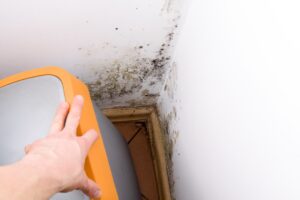I think it’s safe to say almost everyone knows about mold and mold growth.
You’ve seen it grow on your roommate’s food when they left it in the fridge too long and there’s a good chance you did your fourth grade science project on it.
The stuff on your walls, the stuff on your food and that stuff you grew for science class are all the same thing – mold.
But when you become a homeowner, mold takes on a whole new meaning. Not only can it cause some side effects to people who are allergic, it’s unsightly and doesn’t have a pleasant odor. You want it out of your house, but where do you start?
Lucky for you, you’re in the right spot. We know a thing or two about mold.
Mold Testing: Details to Note
If you call in professionals to have your house tested for mold there’s a few different types of test that can be done.
It’s important to note, though, that mold is everywhere. It’s a natural growing substance and all houses and facilities have some levels of mold.
Here at Mold Solutions, we do pre-testing and post-testing. This allows us to see what progress we’ve made after we complete the mold remediation process and if we’re happy with the results.
It also gives us an independant and fair measure for making sure your home air quality has returned to normal. We really want to make sure our customers are safe and happy after it’s all said and done.
Now, let’s talk about the different types of tests performed.
Types of Mold Testing
One of the most common types of mold testing is air sampling and, yes, it’s exactly what it sounds like. With air sampling we take a sample of the air outside the home as well as a separate sample of the air inside the home. This lets us see what levels of mold we’re dealing with and whether or not the mold spores found inside the house are a variety of mold that isn’t naturally found in the area.
As I mentioned earlier, all homes have some levels of mold and we remove the mold regardless of what the levels are, but we like to know where we’re starting.
Another common type of test is called a lift tape sample. Using a special type of tape, we adhere it to surfaces where mold is suspected. When we remove the tape, any mold spores attached to the tape are then sent to a lab for analyzation. Once we get the results back, we then determine the next steps in our process.
Finally, there’s also a test called a swab test. While similar to the lift tape test in which we swab an area where mold is suspected, this one is used infrequently. This test only tells us the type of mold found but doesn’t give us a reading on spore count.
Contacting the Pros for Mold Growth
No matter how much mold you find, we always suggest calling in certified professionals. Mold is tricky to deal with and has to be removed using certain procedures, and these aren’t procedures the average person is familiar with.
Mold spores can spread easily and you want to avoid that at all costs, so why not just call us first? We have an entire team of trained and certified professionals ready to talk to you about any concerns you might have. Feel free to call us today!







